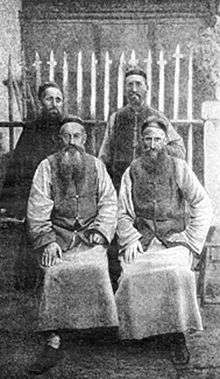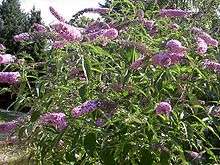André Soulié

Jean André Soulié (1858–1905) was a French missionary and botanist, murdered in Tibet.
Biography
Soulié was born in Saint-Juéry, Aveyron, on October 6, 1858. He was ordained July 5, 1885, for the Paris Foreign Missions Society and sent in October 1885 to the Apostolic Vicariate of Thibet (now Diocese of Kangding), administered by Mgr Félix Biet. His first mission was to Batang,[1] then at Cha-pa (now Shaba, close to Kanding). He met with his colleagues the French expedition of Gabriel Bonvalot and Prince Henri of Orléans in June 1890 at Ta-tsien lu (now Kangding).[2] In 1896, he was sent to the mission station of Tse-ku (close to now Yanmen) with Father Jules Dubernard. This village is situated on the right bank of the Lancang (upper Mekong) river. Afterwards, he moved to Yaregong (now YariGong Xiang) where he gained some popularity by practicing medicine among local people.
Death
Soulié was captured, tortured and shot close to Yaregong, Sichuan, by lamas during the 1905 Tibetan revolt.[3]
Legacy

As a botanist, Father Soulié collected more than 7,000 species, among them Rosa soulieana, a species of endemic Rosa, which was introduced in Europe by Auguste Louis Maurice de Vilmorin, and studied by Museum d'histoire naturelle in Paris, and then by François Crépin in 1896. Most of Father Soulié's specimens were notably studied and defined by Adrien Franchet.
Father Soulié also sent in 1895 the first seeds of Buddleja davidii to Paris. This decorative tree was then introduced by Vilmorin and widely distributed in Europe after 1916.[4]
Around Tsekou and Atentsé (now Yunling), he captured and sent to the French Natural History Museum the first specimens known to science of the Black snub-nosed monkey, Rhinopithecus bieti, described by Alphonse Milne-Edwards in 1897.
Notes
- ↑ Archives of the Paris Foreign Missions Society
- ↑ Gabriel Bonvalot, L'Asie inconnue: à travers le Tibet, Paris, Flammarion, 1896, p. 375
- ↑ Annales des Missions étrangères Archived November 22, 2015, at the Wayback Machine.
- ↑ Serge Muller (coord.), Plantes invasives en France, Publications scientifiques du MNHN, 2004 (réimpr. Muséum national d’Histoire naturelle), 168 p
References
- Françoise Fauconnet-Buzelin, Les Martyrs oubliés du Tibet. Chronique d'une rencontre manquée (1855-1940), éd. du Cerf, coll. Petit Cerf, Paris, 2012, 656 pages